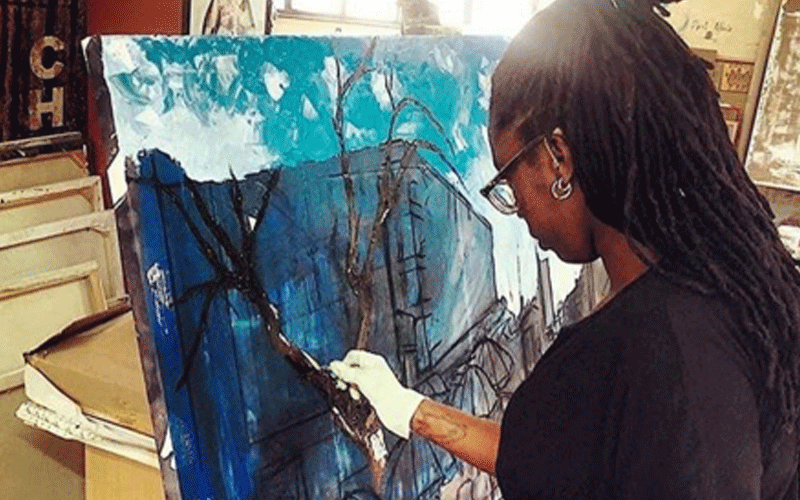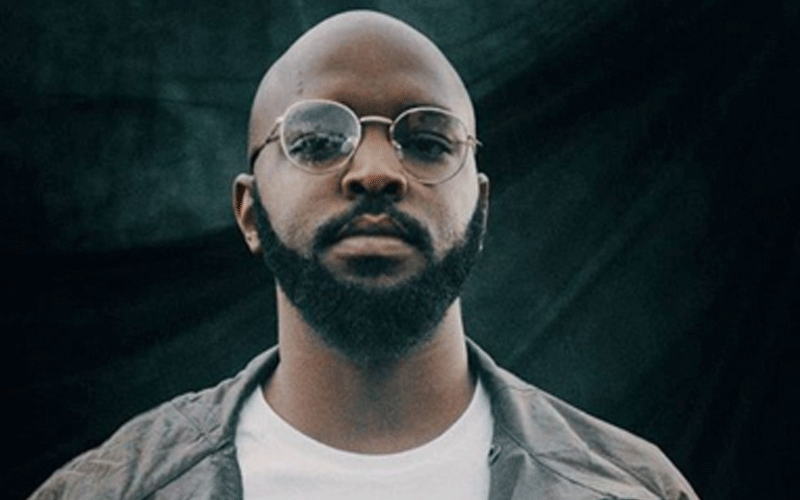Players in the Nairobi art scene optimistic of growth

Nairobi’s art community is striving hard to reap dividends from its creative work. But as ALFAYO ONYANGO writes, the industry doesn’t seem to fulfil the appetites of the tireless bees
I recently visited Karen Village Art Studios in Nairobi where I met the industrious visual artist Bakhita Gikonyo aka Sheni already in her routine environment.
In her fairy lit studio that acts as her creative space, some candid music to get her creative juices flowing plays in the background.
Canvas paintings of different sizes, colours and themes litter the place, as she ritually lights up some incense.
“I was inspired to move to Karen Village in July 2019 because I officially opted to drop out of the psychology degree I was pursuing at the United States International University (USIU) in March the same year.
And so, getting a private space to create my pieces and operate from became a priority for me in order to propel my work into a wider and professional recognition.
As I am both a visual and musical artiste, I also needed a space that would allow me to have loud uninterrupted practice for my performances and creation process,” Bakhita tells Spice.
For years, art in Nairobi has been a vibrant culture with the likes of the Circle Art Gallery, Kuona Trust, Pawa 254, Kenya National Theatre and GoDown Art Centre being some of the most profound amenities for art lovers and producers to share the joy for their passions.
“The last highest bid I heard of was at a private exhibition in Kitisuru for Peter Elugnat’s work in 2018. His piece went for Sh858,955.
The same year at the Circle Art Gallery, there was a piece by Yony Waite that went for Sh1.4 million.
Those are the highest bids I know of in my time as an artist and collector,” says Naimutie Nyoike.
The escape route
Naimutie is a painter and art teacher, who has been immersed in the art for some few years now. She generally uses it as an escape from her daily life highs and lows and also as a way to express herself.
“My pieces usually range from Sh20,000 upwards. The pricing criteria I go by is the materials, time and effort put into the art piece on the showcase. 
Another reason is because I teach art to neuro-diverse children (those living with disorders such as autism and Attention Deficit Hyperactivity Disorder) in my bid to get enough for them and myself, and also to have a better life than what I have right now,” says Naimutie.
Art materials do come at some cost too. For instance, a tin of acrylic oil paint goes for Sh800, while other tools such as canvas, paint brushes, glass, stones and wood boards, among others, also attract their respective prices depending on quantities, making the cost of production for art an expensive affair.
“Size matters. Individually, I could sell a piece for Sh30,000, but when done through a gallery, it could fetch an upward of Sh70,000.
I am, however very selective about who or where I agree to sell my pieces, so as to uphold what they represent. I can’t work with people who challenge the integrity of my stance on biased and discriminatory systems.
Thus, I don’t have many buyers or opportunities as I’d eventually hope to, but it’s a price I’m willing to pay to keep my work authentic and raw,” says Bakhita, who has just released her Colours EP.
She adds: “Another main thing I consider when setting a price point is the size of the stretched canvas I use. This is to accurately account for the production and creative process predominantly when looking at the duration taken to create any specific piece.”
Art is not all about commerce. The motivation by true artists is to share an experience; a story, an idea, a grievance, a feeling or whatever they feel can be articulated through their creations.
The financial aspect only presents itself as a portal through the capitalistic nature of the world that dictates we have to have money to survive.
Art the healer
Since her childhood, artist Nadia Wamunyu—an avid painter—has suffered from hearing loss. 
But this hasn’t been a hindrance for her to achieve her dreams. She uses art as an outlet from the life pressures, so that she does not feel any lesser.
Instead, she feels more inspired and empowered to engage with people through her works of art.
Wamuyu experiments with art forms such as portraits, landscaping, memories, women’s rights, feminism, environment and any more.
She uses charcoal on paper, acrylic on canvas, ink, bleach, coffee, oil paints, pastels and chalk just to see her vision come to life.
She tells Spice: “I have displayed my artworks at Lamu Fort, British Council, Polka Dot Art Agency, Shift Eye Gallery, Kerry Packer Civic Gallery in South Australia, Absa Art Gallery in South Africa, US Embassy and Nairobi Museum, among others.”
Janice Iche is an eclectic artist that dabbles in music as a recording and performing artiste, painting and cloth wear (Ché) and can be quite enigmatic, but profuse in all the disciplines.
“I took a break from painting to focus on other things. I took the break on exhibiting because I did not like how my paintings were being undervalued in the market, yet I value them highly.
Focusing on music and Ché is just some of the ways I redirect my energy into other art forms that also bring the fulfillment in me.
No avenue has been easier than the other; all demand a lot from me,” says Iche.
Her latest music release So Tired talks about her struggles being a non-conformist artiste in Nairobi and the fight she has to endure to maintain sound mental health.
Modern day alternatives
Digital artist Anthony Muisyo deals a different hand, however. He does not take the traditional route of hand-to-material to curate, but prefers the more modern digital manner of using his computer softwares to actualise his imaginations.
“I haven’t dabbled in traditional media. I’ve exclusively done all my art in a digital medium because I have been privileged enough to always have access to a computer.
As well, I think we’re at a pivotal time in a modern society where the ubiquitous nature of tech has really pushed the adoption of digital art.
There’s numerous resources online as well as software all over to get started without even having a background in art,” Muisyo says.
He too commercialises his gift through art exhibitions and commissioning album covers to not only local consumers, but also international buyers. His muse, he says, are mostly Kenyans during different times. 
Although digital art is vulnerable to duplication and copyright infringements, there’s still a discussion on how to permanently protect artists’ Intellectual Property rights.
Even so, some artists use signatures on their work to avoid being infringed and thrill at the idea of their works getting the exposure that it generates online.
“The Nairobi art scene is looking promising and I’m excited about it. We’re finally reaping the fruits of the undersea cable that came to Kenya during President Kibaki’s tenure.
This brought high Internet speeds at affordable rates and this has enabled so many young Kenyans to learn their craft through the Internet,” Muisyo exuberates.
Many artists are trying to push the narrative that art is not just a rich man’s trade, but rather a growing phenomenon that can be therapeutic and time-worthy.
“In Kenya, consistency is key. Many times in art, what you put in isn’t what is always reciprocated. Sometimes people forget to look at art as a career path and because of that, they tend to underprice the product.
This then makes it hard to sell your work at what you think is it’s worth. I would really love it if more Kenyans bought art.
Hopefully with time, my art will serenade more souls and whisper more into their pockets,” a hopeful Naimutie concludes.



